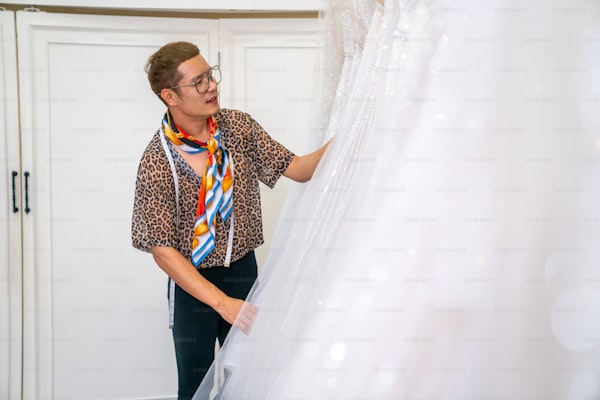Exploring the Art of Creating Convertible Wedding Dresses: Techniques Unveiled
Exploring the Art of Creating Convertible Wedding Dresses: Techniques Unveiled
Convertible Wedding dresses have taken the bridal fashion world by storm, providing versatility and style for brides who seek both elegance and practicality on their special day. The ability to transform a single gown into multiple looks offers a unique approach to wedding attire, allowing brides to tailor their appearance based on the ceremony, reception, and various celebrations that may follow. But what techniques are used to create these beautiful garments? In this article, we will unveil the craftsmanship behind convertible Wedding dresses while exploring various styles, materials, and design elements.
The Allure of Convertible Wedding dresses
Convertible Wedding dresses are designed to adapt seamlessly to different functions and locales throughout a wedding day. With the increasing trend of more personalized weddings, brides are looking for gowns that not only reflect their style but also cater to their desired level of comfort and function. From skirts that can be removed to reveal a sleek cocktail dress to sleeves that can be added or detached, the creativity involved in the design of convertible Wedding dresses is both impressive and inspiring.
Key Techniques in Crafting Convertible Wedding dresses
The creation of a convertible wedding dress involves a variety of techniques that combine fashion innovation with traditional craftsmanship. Here are some notable techniques used by designers:
1. Modular Design Elements
One of the most prominent techniques is the use of modular design elements. This approach incorporates detachable parts such as sleeves, trains, and skirts. For instance, a full-length wedding gown can feature a detachable overlay that can be removed for the reception, allowing the bride to switch to a shorter length effortlessly. This technique provides practicality without sacrificing elegance.
2. Use of Quality Fasteners
Fasteners play a critical role in convertible Wedding dresses, as they need to be both secure and easy to open or close. Designers often utilize high-quality hooks, buttons, and zippers, which ensure that the detachable components stay in place while allowing for a quick change when necessary. Invisible zippers are particularly popular for creating a seamless look.
3. Layering Techniques
Layering is another artistic technique that encourages versatility in dress design. With the use of multiple layers of fabric, designers can create structured skirts that can be flared out for dramatic effect or flattened for a more streamlined appearance. Many convertible dresses feature layers that can be adjusted, giving the bride control over her look throughout the day.
Materials That Enhance Transformability
The selection of materials is crucial in crafting a convertible wedding dress. Breathable fabrics are essential for comfort, especially for long days of celebration. Here are some common materials used in convertible designs:
| Material | Properties |
| Silk | Luxurious, light, and breathable; drapes beautifully. |
| Tulle | Light and airy; adds volume but can also be layered for a softer look. |
| Chiffon | Soft and flowy; excellent for creating layers and movement. |
| Lace | Textured and delicate; adds romance and can function as a removable overlay. |
Signature Styles of Convertible Wedding dresses
Once the techniques are understood, it’s important to explore the different styles of convertible Wedding dresses available today. Here are a few popular styles:
1. Ball Gown to Cocktail Dress
This style typically features a voluminous ball gown silhouette that can be converted into a chic cocktail dress when the ceremony concludes. The skirt often attaches with hooks that can be easily removed, offering a stylish and comfortable alternative for dancing the night away.
2. A-Line with Detachable Train
An A-line dress can be paired with a long, flowing train that attaches at the waist. This allows the bride to enjoy a traditional look during the ceremony, then detach the train to reveal a simpler design for the reception.
3. Off-Shoulder to Strapless
Off-shoulder gowns with detachable sleeves provide the flexibility to switch between elegant and relaxed looks. Brides can start with the sleeves for a modest look during the ceremony and later remove them for a more daring style during the festivities.
Considerations When Choosing a Convertible Wedding Dress
As brides embark on the journey of selecting their wedding dress, it's essential to consider a few factors regarding convertible designs. Here are some tips to keep in mind:
- Comfort is Key: While style is essential, comfort should never be compromised. Ensure that the fabrics used are breathable, especially if you are planning a summer wedding.
- Fit and Structure: Make sure the dress fits perfectly and that the detachable components add to the gown's structure rather than detract from it. A properly fitted dress will enhance your shape and provide confidence.
- Detachable Elements: Assess how many detachable elements you want. Too many options can complicate getting dressed and transitioning between looks.
- Practice Changing: If possible, practice changing into your second look before the big day. This can help alleviate any nerves during your wedding.
Conclusion
Creating a convertible wedding dress involves a blend of innovative techniques, high-quality materials, and impeccable design principles. From modular elements to strategic layering, the artistry behind these gowns allows brides to personalize their wedding attire while ensuring they feel beautiful and comfortable throughout their celebrations. When choosing a convertible wedding dress, prioritize your comfort and ensure a perfect fit to enjoy your special day to the fullest. With the right research and creativity, you can find the perfect convertible design that captures your unique bridal style.

